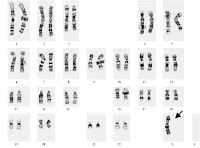 (the punnett square is similar to this)
(the punnett square is similar to this)Then we went over the homework. The chance for a child with both diseases would be 6.25% (1/16 of the punnett square). The chance for the child to be normal would be 56.25% (9/16 of the punnett square). The chances of the child to have the disease galactosemia is 18.75% (3/16 of the punnett square). The chances of a child getting the disease PKU is 18.75% (3/16 of the punnett square).
OFF TOPIC BUT: POSSIBLE FINAL TEST.....BE PREPAIRED.
Next we were reborn, into a bug called a reebop. Our purpose is to born ourselves. (or make our own traits.) After, we recived worksheets stating the bugs general information. They consist of these genotypes:
- L l-Legs: long or short (all legs are black)
- R r-Eye Color: red or black (the rest of the head is the same color as the body)
- BG BR b- Body Color: blue, red or green. (the g and r are super scripts)
- S s- Spots or No Spots (spots are all black)
- W w-Wings: Wings Or No Wings (All wings are transparent. Color what is under them lightly.)
- C f-Antenne: Curved antennae or feathered antennae. (these are incompletely dominet: they are all brown.)
- X Y- the sex
- H h-yellow head disease recessive and linked to males.
* WE DIDNT GET TO FINNISH....DONT DO IT FOR HOMEWORK*
-TORI FUSCO ROUND 5 <3333

 In group A, there's A antigens present and B antibodies.
In group A, there's A antigens present and B antibodies.















 then they are pulled a part and to the besty think and but they'r hand out in anaphase.
then they are pulled a part and to the besty think and but they'r hand out in anaphase.














 Mr. Finley then gave us a sheet to do about what we saw. Here are the questions asked on the sheet.
Mr. Finley then gave us a sheet to do about what we saw. Here are the questions asked on the sheet.






